
Time:2025-08-06
Sapphire window panels, as a high-performance optical component, have been applied in various fields due to their optical and physical properties. This artificial crystal material made of single crystal alpha alumina (Al ₂ O ∝) has a unique crystal structure that endows it with excellent properties beyond ordinary optical glass.
From the perspective of optical properties, the significant feature of sapphire window plates is their extremely wide range of light transmission. It exhibits excellent transparency in the wavelength range of 0.15-5.5 μ m, especially in the ultraviolet to near-infrared band, with a transmittance of over 85%. This broad-spectrum transmission characteristic makes it an ideal choice for multispectral imaging systems and laser equipment. In ultraviolet optical systems, sapphire window plates can effectively replace quartz glass, providing better mechanical strength and chemical stability. It is worth noting that sapphire has birefringence, with a normal refractive index of no=1.768 and an extraordinary refractive index of ne=1.760 (@ 589nm). This characteristic needs to be specially considered in optical system design.
In terms of physical properties, sapphire has a Mohs hardness of 9, which gives it strong scratch resistance. Its compressive strength can reach over 2GPa, which is 3-5 times that of ordinary optical glass. This excellent mechanical performance makes sapphire window panels particularly suitable for optical systems in harsh environments. Meanwhile, the thermal conductivity of sapphire is 25-35W/(m · K), which is much higher than that of ordinary glass, enabling it to effectively dissipate heat in high-power laser systems and avoid thermal lens effects.

Thermal stability is another prominent advantage of sapphire window panels. Its melting point is as high as 2053 ℃, and its coefficient of thermal expansion is 5-8 × 10 ⁻⁶/℃ in the range of room temperature to 1000 ℃, exhibiting high thermal stability. In practical applications, sapphire window plates can withstand drastic temperature changes without breaking, making them a material for high-temperature observation windows. For example, in semiconductor manufacturing equipment, sapphire window plates can withstand high temperature erosion in plasma etching environments.
In terms of chemical inertness, sapphire is almost insoluble in all common acids and bases (except hydrofluoric acid and hot phosphoric acid), and exhibits strong resistance to most chemical substances at room temperature. Even at a high temperature of 300 ℃, sapphire remains stable against strong acids and bases. This characteristic makes it particularly suitable for observation windows in corrosive environments, such as chemical equipment, bioreactors, etc. Meanwhile, sapphire has excellent vacuum performance and low gas release rate, making it an ideal window material for vacuum systems.
In terms of surface treatment technology, modern polishing techniques can achieve nanometer level (Ra<1nm) surface roughness of sapphire window plates, which is crucial for high-precision optical systems. Through special coating processes, anti reflective, reflective, or filter films can be deposited on the surface of sapphire, further expanding its application range. For example, in infrared imaging systems, coating a specific wavelength of anti reflective film can significantly improve the system's transmittance; In laser equipment, coating a high damage threshold film layer can protect the window plate from high-power laser damage.
From an application perspective, sapphire window panels have demonstrated unique value in multiple fields. In the field of industrial testing, its high temperature resistance and chemical stability are suitable for observing molten metals and monitoring chemical reactions; In scientific research instruments, its wide spectral transmission characteristics can be used for synchrotron radiation beamlines and extreme ultraviolet optical systems. Especially in high-power laser systems, the high thermal conductivity and laser damage threshold (up to 10J/cm ² @ 1064nm, 10ns) of sapphire window plates make them important optical components.
Sapphire window panels play an important role in the development of modern technology due to their unique optical and physical properties. With the advancement of material growth and processing technology, its performance will be further improved, and its application fields will continue to expand, providing support for the development of optical engineering and materials science.
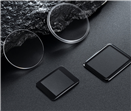
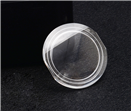
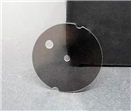
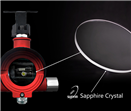
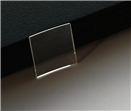
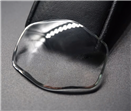
Tel
Mobile phone
Customer service
TOP